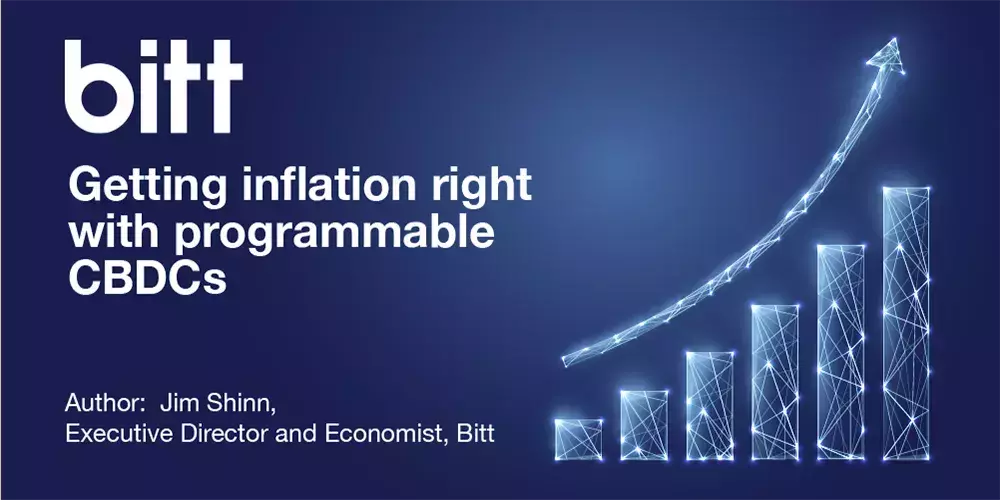Getting Inflation Right With Programmable CBDCs

Accurately tracking and forecasting inflation is the primary problem for central bankers around the world. Data derived from programmable central bank digital currencies (CBDCs) in Bitt’s digital currency management system (DCMS) offers one of the most promising solutions to this pressing monetary policy challenge.
As the IMF warned in the Global Financial Stability Report issued on October 11, “The world economy is experiencing stubbornly high inflation, a challenge it has not faced for decades.”
Inflation rates have doubled in 37 of 44 advanced economies over the past 24 months. The average annual inflation rate in the OECD countries is now running at 10.2%. Many emerging markets are on fire, and not just the failed economies such as, Venezuela or Argentina. Turkey is currently running at 55% YOY inflation.
Of greater concern is the high inflation rate predictions by economists and foreign exchange traders. They keep getting these forecasts wrong. Why?
The data central bankers use for estimating inflation is both backward-looking and partial. For example, the official consumer price index (CPI) is based on monthly surveys of 94,000 prices for 200 consumption categories in the United States. However, these prices often change daily, and 94,000 is a tiny fraction of total consumer items. The U.S. Federal Reserve has tried to build a more current inflation index by means of now-casting, using more current proxy prices; but of the ten price inputs, eight are monthly, seven are weekly, and only one – energy prices – is daily.
In contrast to this backward-looking and partial data, the consumer transactions enabled by Bitt’s CBDC system provide a vast data set of anonymized consumer transactions. This data can be used to create a near-real-time inflation index. Bitt’s CBDC data model includes categories for each digital transaction, such as product or service type, merchant details and geographic location of transactions (the central bank can choose to track this data).
The anonymized CBDC transactions stream is ported from the underlying layer one network into Bitt’s world state database, which processes and parses transactional metadata. The CBDC transactional data can then be automatically fed into the central bank’s inflation calculation, on a daily or even hourly basis. The CBDC transactions data set can be queried on an ad hoc basis by central bank researchers using structured query language (SQL) to deeply understand price change patterns in the real economy. The superior inflation time series derived from the CBDC transactions data can be fed into the central bank’s dynamic stochastic general equilibrium (DSGE) models in order to more accurately predict the macro economy overall.
In Bitt’s system architecture, access to the central bank’s CBDC transactions database is strictly permissioned. Personally identifiable information (PII) is removed from every transaction before it is posted to the blockchain, so the privacy of households and businesses using CBDCs is not compromised by the central bank’s inflation analysis.
As a technology enabler to central banks, Bitt is committed to supporting a CBDC architecture that improves the central bank’s ability to perform its core functions of monetary policy management – including getting inflation right.




